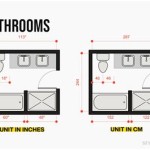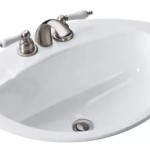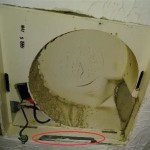Where Should Grab Bars Be Placed In A Bathroom?
Grab bars are critical safety features in bathrooms, especially for individuals with mobility limitations, seniors, and those recovering from injuries. Strategic placement of these bars can significantly reduce the risk of falls and promote independence in performing daily hygiene tasks. Determining the optimal locations for grab bars requires careful consideration of the user's specific needs, the bathroom's layout, and adherence to relevant accessibility guidelines.
The primary goal of grab bar placement is to provide stable support during transitions and movements within the bathroom. This includes getting on and off the toilet, entering and exiting the shower or bathtub, and maneuvering around the room. Improper placement can render the bars ineffective, or even create new hazards. A thorough assessment of the user's reach, strength, and any pre-existing physical limitations is essential before installation.
Building codes and accessibility standards, such as the Americans with Disabilities Act (ADA), offer specific guidelines for grab bar placement in public restrooms. While these guidelines are not always mandatory for private residences, they serve as a valuable resource for ensuring safe and effective installations. Deviations from these standards may be necessary to accommodate individual needs and unique bathroom configurations, but the underlying principles of providing support where it is most needed should always be maintained.
Consideration should also be given to the type of grab bar being used. There are various types, including straight bars, angled bars, and flip-up bars. The choice of grab bar will depend on the specific location and the type of support required. For example, an angled bar may be more suitable for assisting with transfers from a wheelchair to the toilet, while a straight bar may be sufficient for providing balance in the shower.
Finally, proper installation is crucial. Grab bars must be securely anchored to the wall studs or blocking to ensure they can withstand the weight and force applied during use. Using appropriate fasteners and verifying the integrity of the wall structure is essential for preventing accidents. Consulting with a qualified contractor or experienced installer is highly recommended, especially if there are concerns about wall construction or structural support.
Toilet Area Grab Bar Placement
The toilet area presents a significant fall risk, particularly for individuals with balance issues. Proper grab bar placement in this area can provide crucial support for sitting down and standing up. There are typically two common configurations for grab bars around the toilet: horizontal bars and a combination of horizontal and vertical bars.
For a horizontal bar configuration, the ADA recommends that a grab bar be mounted on the wall behind the toilet, typically 33 to 36 inches above the floor. The bar should be at least 36 inches long and positioned so that it extends at least 12 inches beyond the centerline of the toilet on the transfer side. This extension allows the user to have a secure grip as they approach the toilet and begin to lower themselves.
On the side wall adjacent to the toilet, another grab bar is typically installed. This bar should also be mounted 33 to 36 inches above the floor and be at least 42 inches long. It should be placed no more than 12 inches from the rear wall to allow for easy reach and secure grip. The length of this bar provides support for both sitting and standing movements.
An alternative configuration involves using a combination of horizontal and vertical grab bars. A vertical grab bar can be installed near the front of the toilet, on the side wall, to assist with standing. This bar can be particularly helpful for individuals who need extra support when rising from a seated position. The horizontal bar on the side wall remains essential for providing balance and stability during transfers.
Flip-up grab bars are another option, especially in bathrooms with limited space. These bars can be folded up and out of the way when not in use, providing more maneuverability for other users. However, it is crucial to ensure that the flip-up mechanism is robust and reliable, and that the bar locks securely in both the up and down positions.
In situations where the wall behind the toilet is not suitable for mounting a grab bar, a floor-mounted grab bar can be considered. These bars are anchored to the floor and provide additional support without relying on the wall structure. However, floor-mounted bars can take up more space and may not be suitable for all bathroom layouts.
Shower and Bathtub Grab Bar Placement
The shower and bathtub are inherently slippery environments, making them hazardous for individuals with mobility issues. Strategically placed grab bars can significantly reduce the risk of falls and provide support for entering, exiting, and moving around within the shower or tub.
For showers, a vertical grab bar should be placed near the entrance to assist with stepping in and out. This bar should be mounted approximately 33 to 36 inches above the floor and extend upwards for at least 24 inches. The exact placement will depend on the height of the shower entrance and the user's reach.
Inside the shower, a horizontal grab bar should be mounted on the wall opposite the showerhead. This bar provides support for maintaining balance while showering. The ideal height for this bar is typically between 33 and 36 inches above the shower floor. The length of the bar should be sufficient to provide support for a range of movements.
If the shower has a built-in seat, a grab bar should be placed near the seat to assist with sitting and standing. This bar can be either vertical or angled, depending on the user's preference and the available space. The height of the bar should be adjusted to accommodate the height of the seat.
For bathtubs, grab bars should be placed to assist with entering and exiting the tub. A vertical grab bar can be mounted on the wall near the faucet end of the tub, extending from about 8 inches above the rim of the tub to about 8 inches below the rim. This bar provides support for stepping into and out of the tub.
A horizontal grab bar can be mounted on the wall along the long side of the tub, approximately 9 inches above the rim. This bar provides support for maintaining balance while bathing. The length of the bar should be sufficient to provide a secure grip for a range of movements.
When installing grab bars in showers and bathtubs, it is essential to ensure that the bars are securely anchored to the wall studs or blocking. The constant exposure to water and humidity can weaken the wall structure over time, so it is important to use appropriate fasteners and sealants to prevent water damage.
General Considerations and Additional Locations
Beyond the toilet and bathing areas, grab bars can also be beneficial in other parts of the bathroom. For example, a grab bar near the sink can provide support for washing hands and face, especially for individuals who have difficulty standing for extended periods.
The placement of grab bars near the sink will depend on the height of the sink and the user's reach. A horizontal bar mounted on the wall behind the sink, approximately 33 to 36 inches above the floor, can provide support for leaning forward and maintaining balance. Alternatively, two vertical bars can be mounted on either side of the sink, providing support for gripping and stabilizing.
In larger bathrooms, grab bars can be strategically placed along walkways to provide support for ambulating. These bars can be particularly helpful for individuals who use walkers or canes. The height and placement of these bars should be adjusted to accommodate the user's specific needs and the layout of the room.
When selecting grab bars, it is important to consider the material and finish of the bars. Stainless steel is a popular choice for its durability and resistance to corrosion. The finish of the bar should be textured or coated to provide a non-slip grip, even when wet. Avoid using smooth or polished finishes, as these can become slippery when wet.
The diameter of the grab bar is also an important consideration. A diameter of 1.25 to 1.5 inches is generally recommended, as this size is easy to grip for most individuals. However, some individuals may prefer a smaller or larger diameter, depending on their hand size and grip strength.
Finally, it is essential to educate the user on the proper use of the grab bars. They should be instructed on how to grip the bars securely and how to use them to assist with transitions and movements. Regular inspection of the grab bars is also important to ensure that they remain securely anchored and in good working condition.

Proper Shower Grab Bar Placement Keeps Your Family Safe Improveit

Where Should Toilet Grab Bars Be Installed Freedom Showers

Proper Shower Grab Bar Placement Keeps Your Family Safe Improveit

Where To Install Grab Bars Add Safety Stability Your Home

Ada Toilet Grab Bar Placement Guide Commercial Grabbars Com

Future Proof Your Bathroom Prepare For Grab Bars Hatchett Contractors

Installing Grab Bars In Your Bathroom A Complete Guide

What Are Bathroom Grab Bars Rex Williams

4 Facts To Know About Bathroom Grab Bars

Ada Toilet Grab Bar Placement Guide Commercial Grabbars Com
Related Posts







